What's inside
Many people in the gym are focused on their physiques, training to build muscle and lose body fat.
While these are great goals, it helps to have actual performance targets to track your training progress.
To this end, PRs – personal records – are an effective way to both motivate and guide your training. This way, you can become a harder, better, faster, and stronger version of yourself.
You just got Kanye and Daft Punk stuck in your head, didn’t you?
Well, add it to your gym playlist for your next workout. But before you go, this article will give you everything you need to know to set new PRs in your fitness journey!
What does PR mean in the gym?
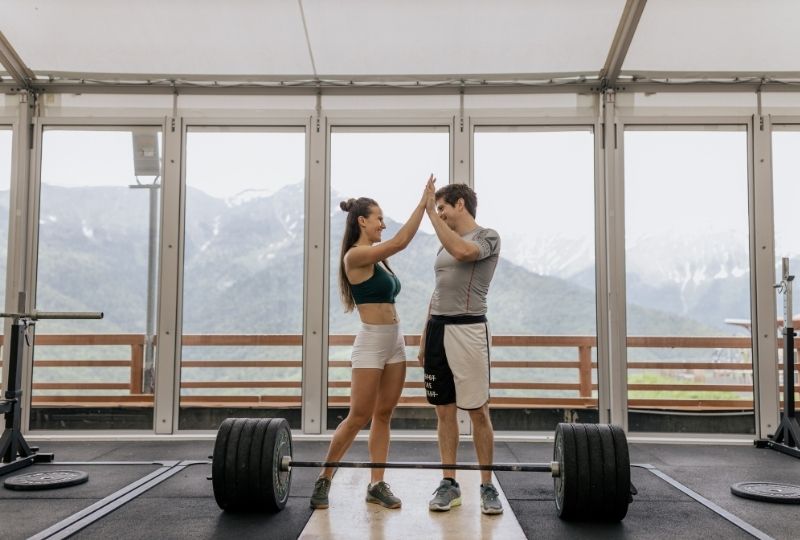
Achieving a PR in the gym means performing at the highest level you can within a certain training metric.
A PR may be a new one-repetition maximum (1RM) for a strength exercise or a faster time for a certain aerobic or conditioning workout.
You can set PRs in any athletic pursuit you choose to measure.
A PR – or PB (personal best) – is the best performance you’ve achieved in your training career as a whole.
This means that PRs are usually set at the peak of an athlete’s genetic potential, which can be different in various sports and training disciplines.
PRs are particularly important in official competition. We’ll explain the difference between formal and informal PRs below.
The following section will break down the different areas of training where we typically see people striving to achieve personal records.
Types of PRs in the Gym
Strength
Strength PRs are what most people typically think of when it comes to gym PRs.
Muscular strength is defined as the ability to exert force on an external resistance.
Testing a PR in strength is really a test of the neurological system’s ability to recruit the highest amount of available muscle fibers.
Strength PRs are best ascertained with multi-joint, compound exercises that recruit many muscle groups at the same time.
Alternatively, you can test strength within isolated muscle groups. That can provide useful data for training and performance.
These are just some of the ways you can test and set PRs when it comes to strength metrics:
- 1RM: A one-repetition maximum lift with the heaviest load possible. Usually in the three powerlifting movements of the barbell squat, bench press, and deadlift.
- #RM: People may choose to test strength using another repetition maximum. For example, 3RM, 5RM, or 10RM. This can be safer than performing a maximal 1RM and can be done with a wider variety of exercises.
- Strongman lifts: Think events like the yoke carry or lifting Atlas stones onto a platform, and even extreme examples of pulling cars. These can be classified as setting PRs when tested accurately.
Endurance
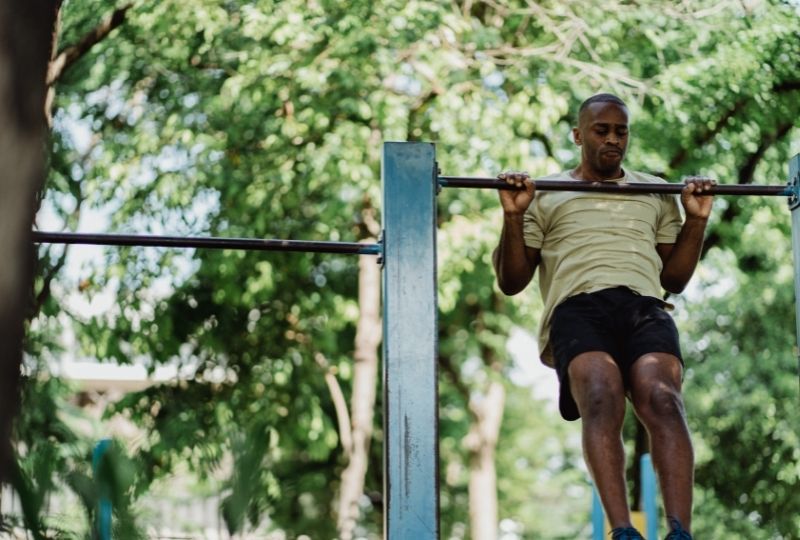
Another common area for testing is endurance, both muscular and cardiovascular.
Muscle endurance is the ability of a given muscle to perform a repeated action against a submaximal resistance before fatigue decreases the level of performance.
In contrast, aerobic endurance is the ability of the cardiopulmonary system to deliver oxygen to working muscles. It is also the capability of the muscles to use that oxygen.
In the world of sports science, maximal oxygen uptake (VO2Max) is regarded as the golden standard when measuring aerobic performance.
While there are many ways to test for different endurance PBs, here are several common examples:
- Bodyweight exercises: Maximum reps for push-ups, pull-ups, bodyweight squats etc.
- Isometric holds: Maximum time for plank, wall sit, dead hang, etc.
- Time trial: Fastest completion of a set distance on a cardio machine – 5km run, marathon, 20km bike ride, 2km on the rower, etc.
- Crossfit benchmark workouts: Angie (100 pull-ups/push-ups/sit-ups/squats for time), Cindy (AMRAP), Chelsea (EMOM), etc.
- Maximal VO2: Shuttle run/beep test, treadmill Bruce protocol, step test, etc.
For those who haven’t trained at a Crossfit facility, here is a quick clarification of some of the named workouts above.
Both sessions consist of multiple rounds of five pull-ups, 10 push-ups, and 15 squats.
The Chelsea workout is an EMOM test, meaning that you perform one round every minute on the minute for a total of 30 minutes.
Your PB in this context would be the number of rounds you can complete, e.g. improving from 16-17 rounds (before collapsing).
The Cindy is the same exercises but in AMRAP form, meaning you perform as many rounds as possible in a 20-minute time limit.
Improving your PB for this type of test would involve completing more total rounds before time runs out.
Power
Finally, we have PBs for power, which is on the more athletic end of the training spectrum.
Muscular power is defined as strength x speed, or force x velocity, in more scientific terms.
Power is the ability to move heavy loads, but it incorporates moving from point A to point B as quickly as possible.
Another factor distinguishing power from strength is that it is mainly concerned with the concentric contraction of the muscles.
This is the lifting of the weight, rather than the eccentric or lowering portion of a given movement.
The exception to this is for activities involving explosive or plyometric exercises such as jumping. Those utilize the rebounding mechanism of muscles and tendons to create elastic power.
Here are some widely-used tests to measure an individual’s PBs in terms of power:
- Explosive lifts: Jump squat, plyometric bench press, etc.
- Olympic lifts: Clean and jerk, snatch.
- Strongman events: Overhead throw, log throw, etc.
- Sports specific: Boxing punching power, tennis serve speed, vertical jump, etc.
There are many other ways to test and set PBs in the gym.
The best way for you will depend on your training level and goals.
Next, we’ll explore the differences between PRs set by individuals in the gym and official competition PRs.
Differences in Personal Gym PR vs. Competition PR
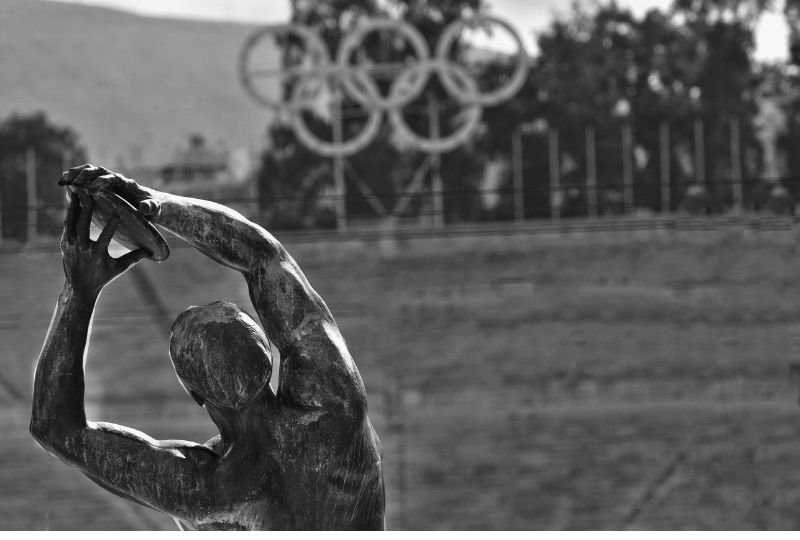
Achieving a new PR in an official competition can be quite different from testing yourself at the gym or on the track.
First, there are often very specific rules and protocols that need to be followed to legitimize a record of any kind.
This includes everything from making a weight class to equipment and technique used.
In certain competitions, there is also testing for performance-enhancing substances.
Setting an official PR may also only be possible at certain times or specific events.
Competition PRs can be the culmination of several personal PRs.
In a powerlifting competition, your final score is the total of the bench, squat, and deadlift.
Setting a new PR in this context would be quite different from a training scenario.
This is because, in practice, you can attempt PRs in each lift on different days when you are fresh.
Now we’ve clarified some of the differences in achieving PRs in formal versus informal settings, let’s find out how to test your PRs in the gym.
How to Test a New PR
In this section, we’ll outline the process for testing your own PRs in the gym.
We’ll use examples for metrics that can be tested by most people in a standard modern gym.
Trying for a new PR in a competition setting is a different matter. For this article, we’ll focus on informal self-testing.
Preparation
The first thing you need to do is select your tests for setting PRs. These will be related to your performance goals in the gym.
The best PRs will be specific to helping you move forward toward your training goals.
Once you’ve picked the appropriate test, it’s important to go into testing fresh and energized.
Steps you can take to prepare for your PR test include:
- Lessen training load in the days or week prior (more on this later).
- Get plenty of sleep the night before attempting a PR.
- Research and implement optimal nutrition and hydration before and during the test.
- Try supplements such as a pre-workout (if suitable) for maximal energy.
Equipment

To perform with your best effort during a PR test, you’ll also need all the right equipment.
This includes both gym equipment required for the test as well as any personal assistive equipment you can use to help your performance.
Any equipment used should also be set up and calibrated so that it can give you a valid result.
Be sure to note the setup of any equipment so that you can repeat future attempts as accurately as possible.
Some examples of both testing and personal equipment for setting new PRs include:
- Free weights: Barbells, dumbbells, weight plates, etc.
- Safety equipment: Power racks, benches, bar clips, etc.
- Machines: Treadmills, concept rower, stationary bike, pin-loaded machine, etc.
- Personal safety/aids: Chalk, shoes, apparel, wrist straps, weightlifting belt, etc.
Warm-Up
While warming up is an important part of any workout session, it becomes critical when attempting a PR.
This is the case not only for safety reasons but also because the appropriate warm-up protocol will help you perform significantly better.
For example, a study tracking the leg press 1RM for two groups showed that the group who performed a general warm-up as well as a specific warm-up had 8.4% higher strength values.
The general warm-up was a 20-minute stationary cycle at 60% of maximum heart rate.
This activates adjustments that increase force production, but that only occurs at certain body temperatures.
The specific warm-up protocol for the 1RM leg press in the above study was as follows:
- One set of eight repetitions at 50% of estimated 1RM
- One set of three repetitions at 70% of estimated 1RM
- Up to five attempts at 1RM weight with three-minute rest intervals
Of course, the warm-up may vary depending on what PR you are aiming for.
Just remember that it’s beneficial to perform a general warm-up as well as a warm-up specific to your test.
Spotters
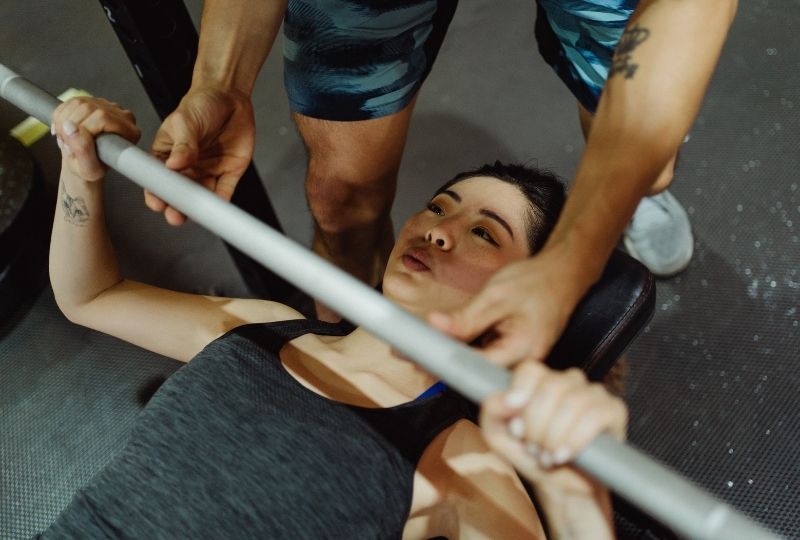
In addition to safety bars, clips, and personal equipment, you may need spotters when attempting certain PRs.
Spotters are used in some official powerlifting competitions to prevent athletes from getting into dangerous situations.
In particular, maximal PR attempts in exercises like the bench press and squat can benefit greatly from having a spotter present.
Just make sure to avoid having the spotter assist your attempts in any way. They should only step in for safety reasons.
The position and technique of the spotter should be clarified before you make your PR attempt. This way, you can avoid having them assist unnecessarily and disrupting your efforts.
Mindset
Finally, we have your mindset going into a PR attempt – one of the most important aspects!
If you follow any elite athletes, you may have seen that one thing most of them have in common is visualization.
A lot of research has been done showing that mental imagery techniques can significantly improve mental aspects of performance. It improves things like confidence, focus, and motivation.
In addition to visualizing yourself attempting – and succeeding – in achieving a new PR, there are other aids you can use to perform at your best.
Another commonly used tool is music, which can help in both aerobic and strength-based PR attempts.
There’s nothing like the right pump-up track that drops just at the precise moment for you to attempt a maximal lift.
There are also playlists that beat at a certain tempo to help you push in a run.
In informal testing scenarios where you can use these techniques to help you make your best PR attempt, they are highly recommended!
How to Track Your PR Progress
PRs are something that should be monitored and attempted consistently – albeit at different time intervals.
Using the example of a 1RM maximal strength test, we can take periodization and use it to create a schedule for attempting a PR.
While there are different methods of periodization, the following table represents a simplified version of a cycle to prepare for a 1RM PR attempt:
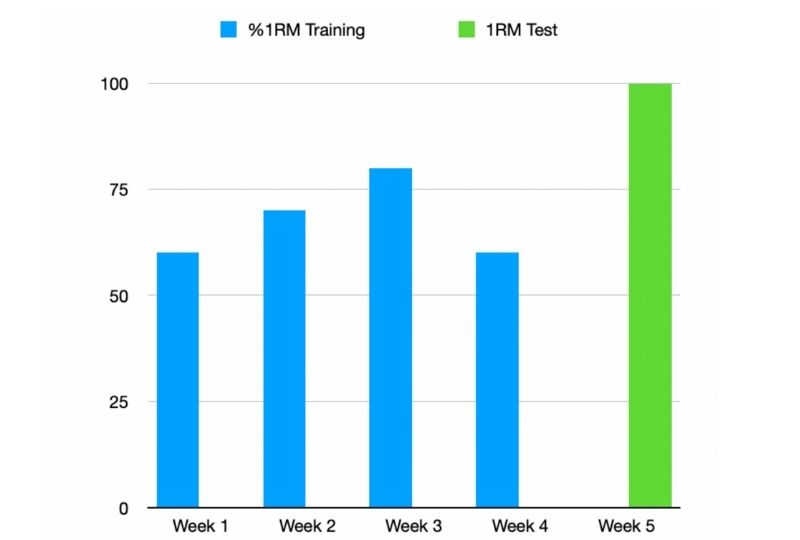
This style involves progressing from higher volume (reps and sets) and lower loads, to higher loads (or intensity) at lower volumes.
The cycle ends with what’s known as a ‘deload’ period, where you train at a lower intensity to allow maximal recovery before a PR attempt.
After a deload period and the prep steps listed above, you’ll be ready to attempt your new PR.
Using the bench press with a 1RM of 220lbs (100kg) as an example, you may perform a cycle using the table as follows:
- Week 1: 3×12 @ 60% 1RM
- Week 2: 4×8 @ 70% 1RM
- Week 3: 5×5 @ 80% 1RM
- Week 4 (Deload): 3×12 @ 60% 1RM
- Week 5: New PR attempt
Periodization can be used in aerobic training as well as resistance exercise. Use heart rate or other cardiovascular performance metrics in place of load for intensity.
The frequency with which you attempt a new PR will be dependent on several factors. These include your training status, the goal itself, and other training variables.
Each PR attempt should be accurately logged and recorded over time, so you can track your progress and improve consistently.
Best Tips for Setting New Personal Records
In this section, we’ll provide some methods that have been shown to improve performance.
There will also be some specific tips for improving your PR on the classic compound lifts.
The Principle of Specificity
The first tip is one of the fundamental principles in strength and conditioning – specificity.
Essentially, this means that if you want to perform a PR in a certain task, you need to train your body for that specific task.
For example, if you want to set a new PR for the number of consecutive pull-ups you can perform, you need to be training – you guessed it – pull-ups!
Specificity helps the body’s various systems to adapt to the angles and velocities required for the activity you’re looking to improve.
While different exercises and training methods can be used, your training should be built around this principle to maximize your PR results.
Variable Resistance Training
While specificity will help create a focal point for your training, it doesn’t have to limit it.
For example, you don’t have to train 1RM every session to break your PR in the 1RM.
This is where the next method, training variability comes into play.
Variable resistance training – using tools such as elastic bands or chains attached to a barbell – can force your muscles to respond to different resistance curves in a given exercise.
For example, when chains are attached to the bar, the top of a squat goes from the easiest part of the movement to the heaviest.
These methods have been shown to significantly increase strength gains compared to conventional strength training.
Other methods to vary your training include partial repetitions. These are proven to improve strength at the terminal range of motion as well as at specific weak points in a lift.
For an exhaustive list of other advanced training methods to help improve your PR, check out our article on the Arnold Split training program.
Auto-Regulated Training
All of these prescribed plans and advanced methods can help you in achieving new PRs in the gym. But, there will inevitably be some days when you just aren’t feeling it.
We’ve all had sessions in the gym where, for whatever reason, we aren’t feeling as energetic as usual.
In those cases, it can be effective to auto-regulate your training.
The auto-regulation method is shown in the literature to be effective for training around lack of sleep, residual fatigue, or suboptimal nutrition.
Put simply, instead of a session where you are supposed to perform eight reps with 70% 1RM, you could just perform your sets with a weight that allows you to hit eight reps.
This lets you keep training and hopefully recovering better for the next session.
Next, here are some specific tips for improving your PR in the big compound lifts.
Deadlift Tips
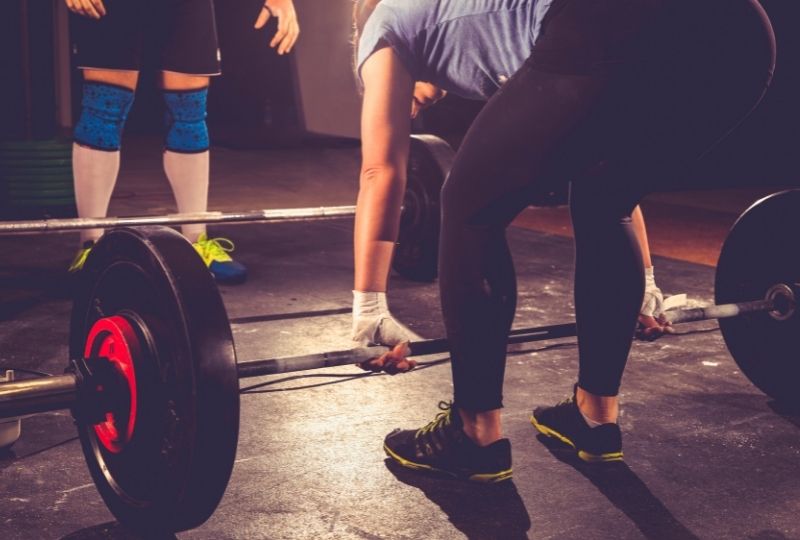
- Experiment with stance – conventional or sumo.
- Select the optimal lift technique for your body type – leg-lift, back-lift, modified back-lift, etc.
- Improve grip strength.
- Assistance exercises: Barbell row, clean, rack pull, etc.
Squat Tips
Related: How Much Does A Trap Bar Weigh?
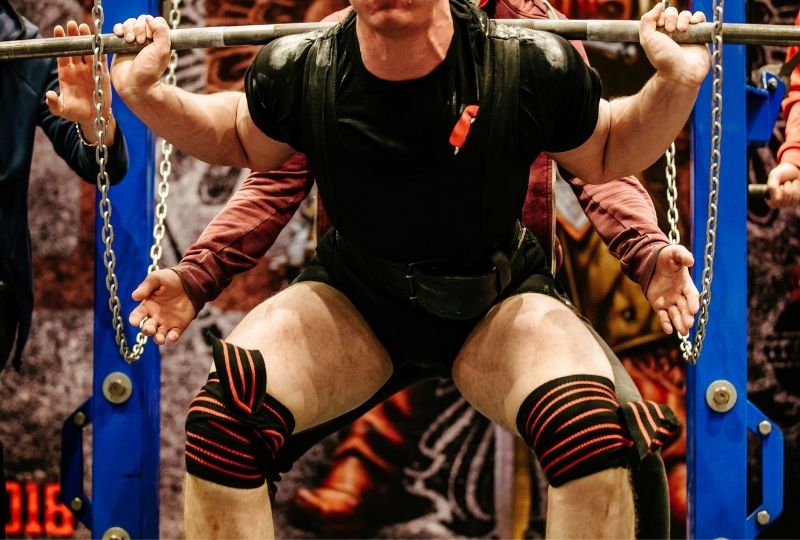
- Experiment with bar position – high-bar or low-bar squat.
- Employ plyometrics – one study found performing two or three tuck jumps or depth jumps 30 seconds before attempts yielded greater 1RM results.
- Use periodization rather than conventional progression.
- Assistance exercises: Front squat, hack squat, Bulgarian split squat, etc.
Bench Press Tips
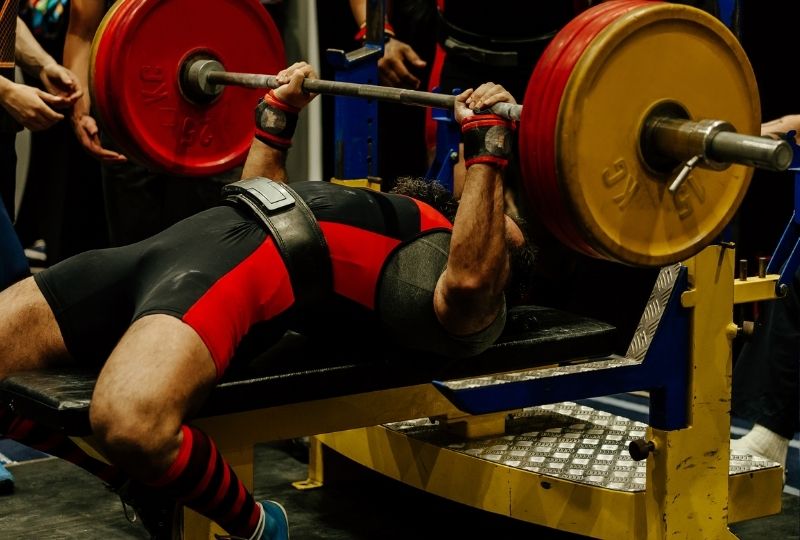
- Experiment with grip width and body position (arching, etc.).
- Use eccentric loading: Research found that training with heavy eccentric (lowering the bar) loads increased 1RM bench press by 5-15lbs.
- Use variable resistance to break through sticking points (see tips above).
- Assistance exercises: Close-grip bench, tricep extension, barbell hip thrusts, etc.
Overhead Press Tips
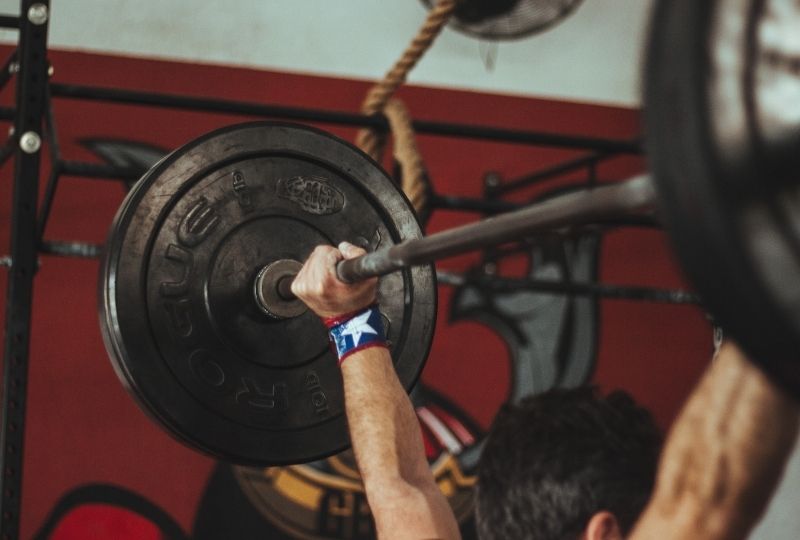
- Train the base – glutes and core.
- Increase shoulder mobility with stretches, soft-tissue work, etc.
- Try different stances – split or square.
- Assistance exercises: Push press, seated dB press, squat, plank, etc.
What’s the difference between PR vs 1RM?
A PR is a personal best that can be achieved in any of the metrics mentioned in this article, whether it be strength-based or cardiovascular.
In terms of strength, your 1RM and PR can be identical at a certain point in time.
However, there will come a point where your current 1RM may not be the same as your all-time PR.
It could be an injury, an off-season or other rest period, or even just Mother Nature and the aging process. Sometimes, you may just not be able to match your previous best effort.
It’s important to consistently retest your performance and base your training on your current fitness level, rather than your past performances.
Final Tips and Recap for New Gym PRs
So, are you pumped to go out and achieve your new PRs in the gym? We sure hope so!
Let us know how you prepare for setting a new PR – and what you train for – in the comments.
If you know anyone who could use these tips to get to the next level in their training, try setting a PR for the quickest you’ve ever shared an article!

